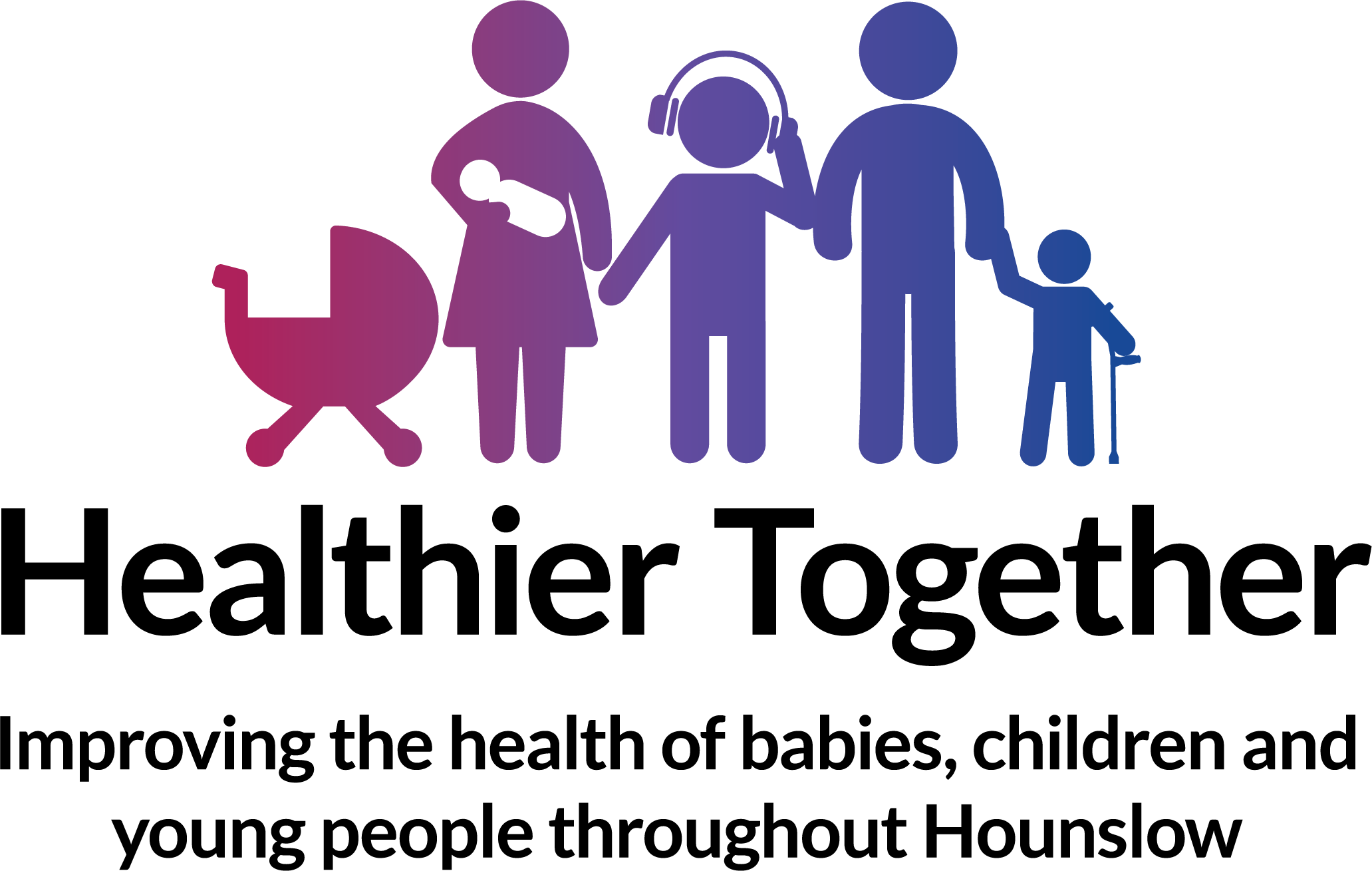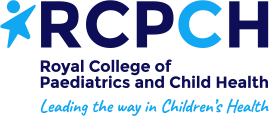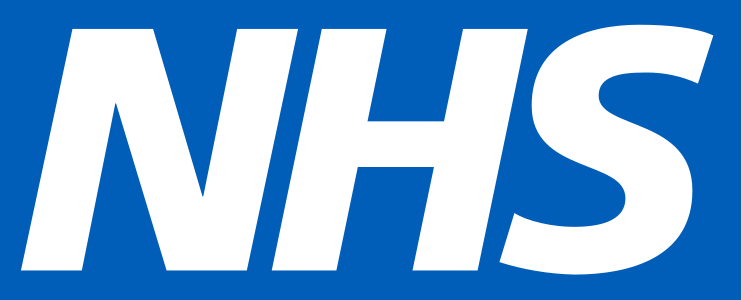Conjunctivitis in children
Advice for professionals
Conjunctivitis ("red eye" or "pink eye") is a common eye condition that affects children, especially under 5 years of age. It can either be caused by an infection or by an allergy. Infectious conjunctivitis is contagious and may spread to other household members. Allergic conjunctivitis is more common in children with allergies such as hay fever.
Symptoms of conjunctivitis include:
- A red or pink eye (or both eyes)
- Redness behind the eyelid
- Swelling of the eyelids, making them appear puffy
- Excessive tears
- Either a watery discharge or a yellow-green discharge from the eye which dries when your child sleeps, causing crusting around the eyelids
- A dislike of bright lights (photophobia)
- A gritty feeling (like there is sand in the eye)
- Itchiness of the eyes and eye rubbing
- Children with allergic conjunctivitis almost always rub their eyes excessively. They may also have an itchy or runny nose and sneezing
When should you worry?
If your child has any of the following:
- Eyeball is bulging out
- Vision loss
- Severe pain in eyes
- Breathing very fast or breathing that stops or pauses
- Working hard to breathe, drawing in of the muscles below the rib, unable to talk or noisy breathing (grunting)
- Becomes pale, blue, mottled and/or unusually cold to touch
- Difficult to wake up, very sleepy or confused
- Weak, high-pitched, continuous cry or extremely agitated
- Has a fit (seizure)
- A temperature less than 36oC or temperature 38oC or more if baby is less than 3 months
- Develops a rash that does not disappear with pressure and seems unwell (see the 'Glass Test')
You need urgent help
Go to the nearest Hospital Emergency (A&E) Department or phone 999-consider using ‘What 3 words’ to best describe location to ambulance service
If your child has any of the following:
- Red swollen eye
- Changes in vision (blurred or very sensitive to light)
- Severe headache
- Persistent vomiting
- Blisters develop on the skin next to the eye
- Babies under 1 month with a red eye(s) and yellow/green discharge
- Breathing a bit faster than normal or working a bit harder to breathe
- Dry skin, lips, tongue or looking pale
- Not had a wee or wet nappy in last 12 hours
- Sleepy or not responding normally
- Crying and unsettled
- Poor feeding (babies) or not drinking (children)
- A temperature 39oC or above in babies 3-6 months
- Temperature of 38oC or above for more than 5 days or shivering with fever (rigors)
- Getting worse or you are worried about them
You need to contact a doctor or nurse today
Please ring your GP surgery or call NHS 111 - dial 111
If none of the above features are present:
Watch them closely for any change and look out for any red or amber symptoms.
Additional advice is also available for families for help cope with crying in otherwise well babies.
Self care
Continue providing your child’s care at home. If you are still concerned about your child, call NHS 111 – dial 111
What should you do?
If your child has mild conjunctivitis, gentle cleaning of the eyes with cotton balls soaked in warm water may help your child feel better.
Clean in one direction only, outwards from the inside (nose side) of the eye. This prevents the other eye becoming infected if only one eye is affected. Discard the cotton ball each time to prevent reinfection.
Do not try to clean inside the eyelids as this may cause damage to the inside of the eye. Lubricating eye drops such as ‘artificial tears’ may give some relief.
Although infective conjunctivitis is contagious, the likelihood of it spreading is not high unless there is close contact with others. To reduce the risk of spread, they should wash their hands regularly (especially after rubbing their eyes) and avoid sharing towels, pillows, eye drops, make-up with others until the discharge from their eyes has cleared. Most children with conjunctivitis do not need treatment with oral antibiotics or antibiotic eye drops, irrespective of whether their infection is caused by a virus or bacteria.
Sore, inflamed and itchy eyes due to allergic conjunctivitis may be helped by antihistamines. Speak to pharmacist about antihistamine use for your child.
Your child does not need to stay away from nursery or school unless your child is feeling very unwell.
Most conjunctivitis in children (bacterial or viral) is mild. It usually clears within 7 to 10 days without antibiotics.
Sticky eye in a baby/blocked tear duct - no treatment required (green)
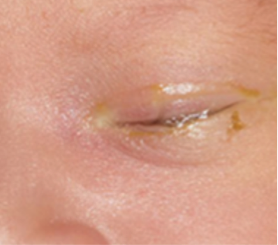
Mild conjunctivitis - no treatment required (green)
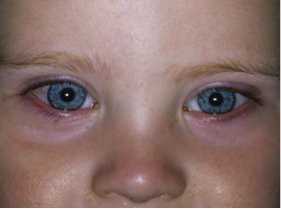
Peri-orbital cellulitis - needs same day review (amber)
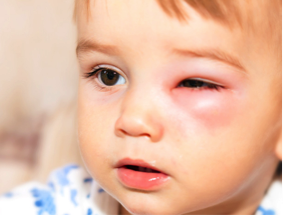
Your child does not need to be excluded from school or childcare if they have conjunctivitis.
